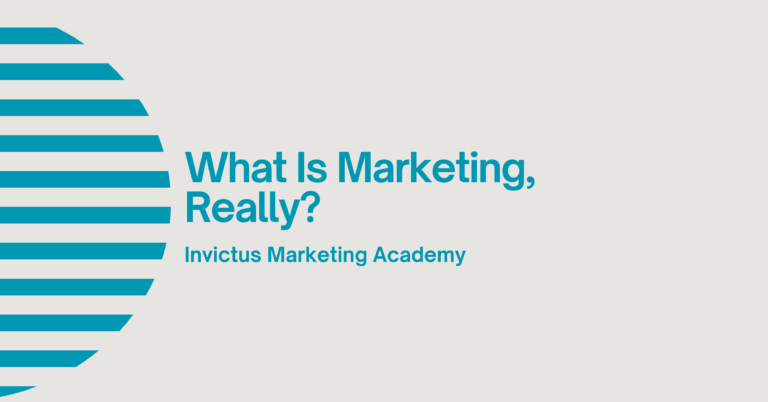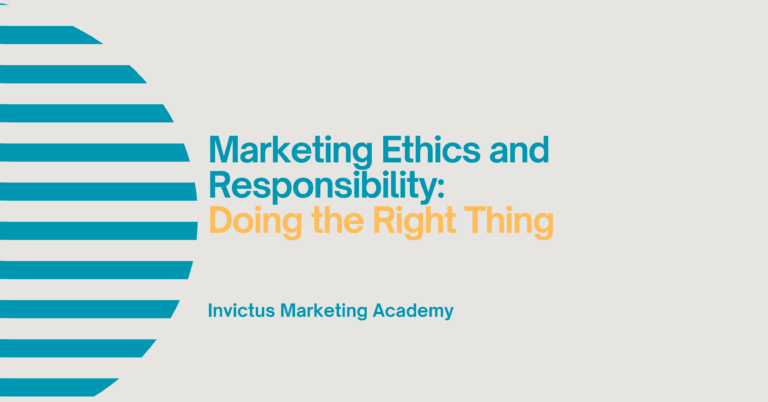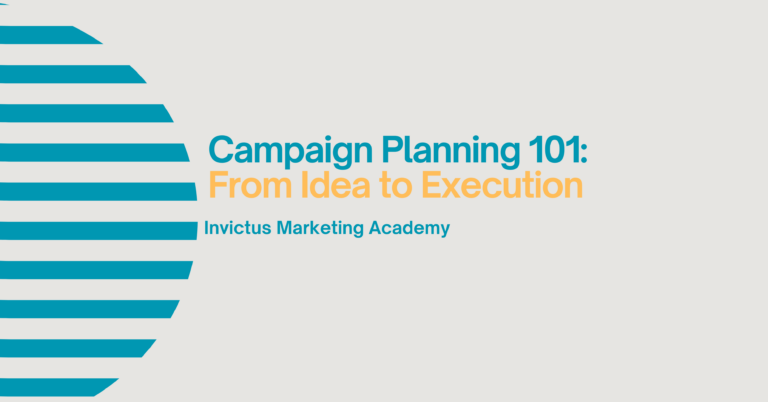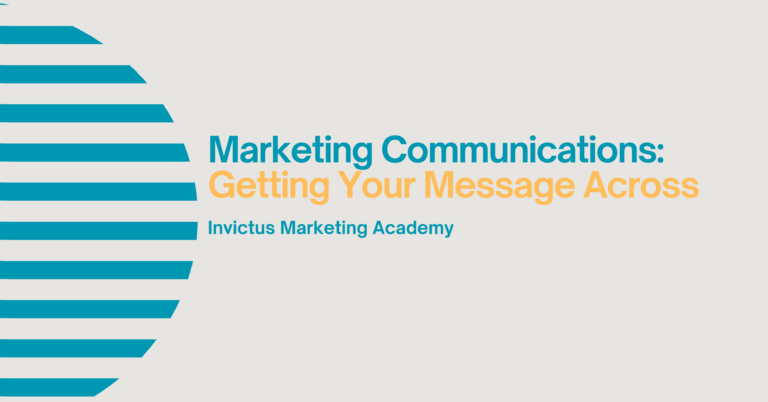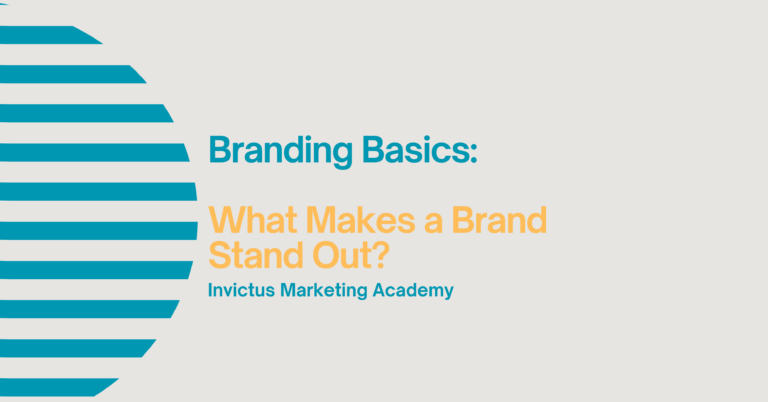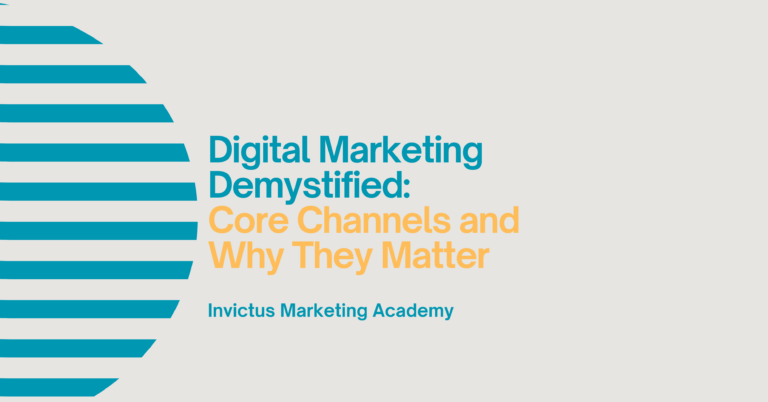The Marketing Funnel in Practice: Putting It All Together
You’ve heard the theory: Awareness at the top, consideration in the middle, conversion at the bottom. But in day-to-day marketing, how do you actually apply the funnel? How do blog posts, social media ads, emails and landing pages come together in a way that feels structured — not scattered?
That’s what this article is about: making the marketing funnel real.
The funnel is more than a model — it’s a practical tool to guide content creation, customer experience, and campaign structure. When used well, it helps you plan smarter, spend better, and move people from “just looking” to “ready to buy” in a way that feels natural — not forced.
Let’s walk through how the funnel works in practice, step by step.
Why Use a Funnel Framework?
Without a funnel-based approach, marketing activity often becomes disjointed — a blog here, an ad there, a half-finished email series. The funnel helps you:
- Deliver the right message at the right time – You’re meeting the audience where they are in their decision-making process.
- Focus content and spend – You’re not wasting effort on tactics that aren’t ready to convert or that reach the wrong audience.
- Simplify campaign planning – Each stage has a clear goal, message, and format.
- Improve conversion rates – When each step is optimised to lead to the next, more people move through the journey.
- Track performance more clearly – You can spot where drop-offs are happening and fix them.
In short, it gives your marketing structure — and structure is what turns effort into results.
The Funnel Breakdown (With Real Applications)
1. Top of Funnel (Awareness)
Goal: Help people discover your brand and recognise a need.
At this stage, your audience doesn’t know who you are — or may not even realise they need what you offer. Your job is to show up in places they’re already looking, and spark interest without selling.
Tactics:
- Blog articles answering common questions
- Social media videos that highlight problems or trends
- SEO-optimised content that captures search traffic
- Educational reels or carousel posts
- Infographics or short videos introducing a big idea
Example:
A personal branding coach writes a blog called “Why You’re Being Overlooked for Promotions (And What to Do About It)”. It speaks to the pain point and introduces the idea of personal branding — but doesn’t yet sell her course.
Focus on empathy and relevance. You’re not asking for anything — just offering something useful.
2. Middle of Funnel (Consideration)
Goal: Build trust, deepen engagement, and guide the user to explore your offer.
Now your audience is aware of you. They might follow you on LinkedIn, subscribe to your newsletter, or read your blog regularly. They’re thinking: “Could this be for me?”
This is where you start to nurture — with more targeted, problem-solving content.
Tactics:
- Lead magnets (e.g. free guides, templates, quizzes)
- Case studies or client stories
- Email sequences that educate and build authority
- Webinars or workshops
- Comparison blog posts (e.g. “Coaching vs Consultancy — Which Is Right for You?”)
Example:
That same branding coach creates a free downloadable workbook: “Build Your 30-Second Personal Brand Pitch”. It’s promoted in her blog and Instagram bio, capturing email addresses and positioning her as a trusted expert.
At this stage, content should increase confidence — showing your audience that you understand them and can help them.
3. Bottom of Funnel (Conversion)
Goal: Help people take action — to buy, book, or sign up.
The audience now knows you, understands your offer, and is almost ready to commit. Your job is to remove friction, answer final objections, and make the next step as easy as possible.
Tactics:
- Clear landing pages with testimonials and FAQs
- Time-sensitive offers or bonuses
- Free trials, demos, or consultations
- Direct outreach or retargeting ads
- Email prompts like “Spots are filling — ready to take the leap?”
Example:
The coach sends an email to her segmented list:
“You’ve built your brand pitch — now let’s work on turning it into results. My next coaching cohort starts Monday. Only 3 spaces left.”
Now is the time for clear calls to action. Be direct, but still helpful and human.
4. Post-Funnel (Retention and Advocacy)
Goal: Keep your customers engaged and turn them into repeat buyers or brand advocates.
The funnel doesn’t end with a sale. Keeping clients happy — and encouraging referrals or upsells — is where long-term growth happens.
Tactics:
- Onboarding emails that show how to get the most from your service
- Client-only resources or bonus content
- Loyalty offers or referral incentives
- “Client wins” posts or spotlights (which also feed the top of the funnel)
- Follow-up surveys or feedback loops
Example:
The coach sends new clients a series called “Maximise Your First 30 Days” with tips, journaling prompts, and videos — helping them stay engaged and see early wins. Happy clients post testimonials and tag her on social.
At this stage, the focus is on delight and depth. Give people reasons to stick around — and tell others.
Mapping a Simple Funnel in Practice
Let’s say you’re a digital marketing consultant. Here’s how a simple funnel might look in practice:
| Funnel Stage | Action |
|---|---|
| Top | Blog post: “How to Simplify Your Marketing in 3 Steps” — promoted via organic LinkedIn and SEO. |
| Middle | Lead magnet: “Your Marketing System Checklist” offered at the end of the blog in exchange for email. |
| Bottom | Email sequence with case studies → CTA to book a free strategy session. |
| Post-Funnel | After the session, follow-up with a tailored proposal and “client onboarding guide” if they sign up. |
It’s clean, connected, and customer-focused. No clutter — just progression.
Common Funnel Mistakes to Avoid
Even with a good plan, marketers can fall into these traps:
- Missing stages – Jumping straight to selling without building awareness or trust.
- Mismatched messages – Ads that promise one thing, but lead to a page that says another.
- Too many options – Confusing CTAs or landing pages with six different links.
- One-and-done mindset – Not following up after a download, purchase or enquiry.
- Measuring the wrong thing – Focusing on reach instead of conversions, or sign-ups instead of retention.
The best funnels are intentional, not accidental. Every step exists for a reason — and moves the user forward.
In Summary
The marketing funnel isn’t just theory — it’s a practical, day-to-day guide to structuring your activity, aligning your message, and building a journey that supports your audience at every stage.
To put it into practice:
- Start with clear awareness content that shows empathy and insight
- Create useful resources to nurture trust and qualify leads
- Make your offer compelling, simple, and timely
- Follow up after conversion with support that builds loyalty and referrals
When your funnel is clear and cohesive, marketing becomes easier to manage — and far more effective.

